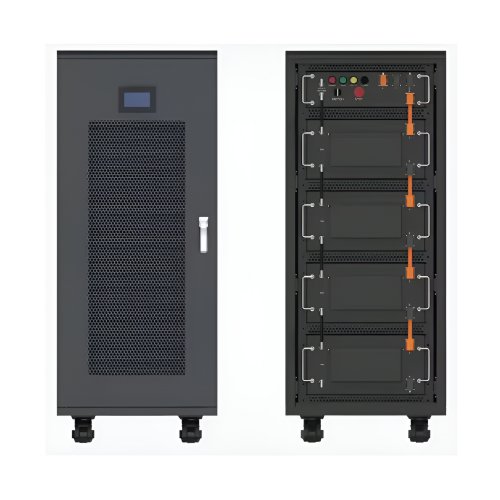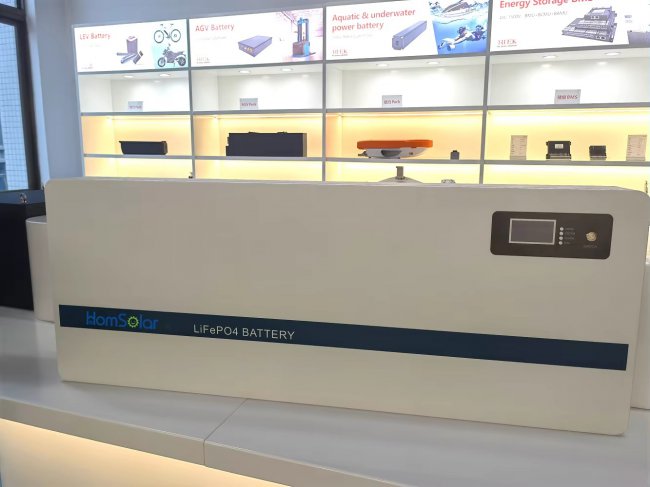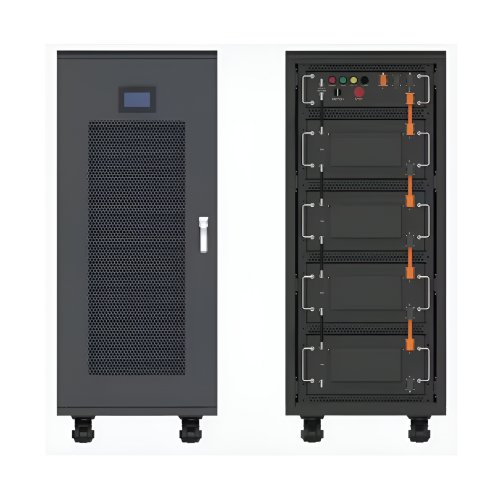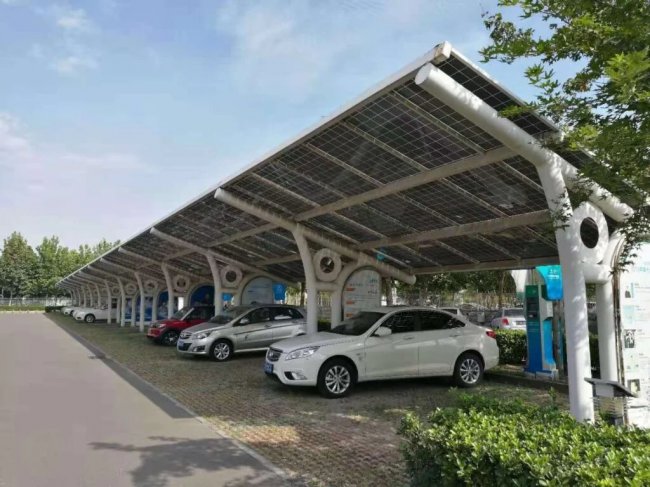Advances In Grid Storage: Integrating Next-generation Technologies For A Resilient And Decarbonized Power System
The global transition towards a decarbonized energy system, heavily reliant on variable renewable energy (VRE) sources like solar and wind, has placed unprecedented importance on grid storage technologies. Energy storage is no longer a peripheral asset but a central pillar for ensuring grid stability, enhancing reliability, and maximizing the utilization of renewable generation. Recent years have witnessed significant breakthroughs across the technological spectrum, from electrochemical solutions to mechanical and thermal systems, driving down costs and improving performance.
Electrochemical Innovations: Beyond Lithium-Ion
Lithium-ion (Li-ion) batteries have dominated the grid storage market, benefiting from economies of scale driven by the electric vehicle industry. Recent research, however, has focused on overcoming their limitations, particularly concerning cycle life, safety risks of thermal runaway, and the scarcity of critical materials like cobalt. Lithium iron phosphate (LFP) chemistry has become the dominant force in new grid-scale projects due to its superior safety, longer lifespan, and reduced cobalt dependency.
Simultaneously, the search for alternatives has accelerated. Solid-state batteries represent a monumental leap forward. By replacing the flammable liquid electrolyte with a solid ceramic or polymer electrolyte, they promise dramatically enhanced safety, higher energy density, and longer cycle life. Recent prototypes from institutions like Toyota and QuantumScape have demonstrated promising results, though challenges in manufacturing scalability and cost remain significant hurdles for widespread grid deployment.
For long-duration energy storage (LDES), which is critical for multi-day weather events and seasonal storage, flow batteries are gaining traction. Vanadium redox flow batteries (VRFBs) are commercially available, but recent breakthroughs focus on reducing the high cost of vanadium. Research into organic flow batteries, which utilize abundant elements like carbon, hydrogen, and oxygen in their electrolyte compounds, has shown great promise. A 2023 study published inNature Energydemonstrated a novel aqueous organic electrolyte that achieved exceptional stability over thousands of cycles, potentially offering a low-cost, sustainable path for LDES. Similarly, zinc-bromine and iron-air batteries are being commercialized by companies such as Form Energy, offering cost-effective storage for 100+ hours.
Mechanical and Thermal Systems for Long-Duration Storage
While batteries excel for shorter durations, mechanical storage remains indispensable for large-scale, long-duration applications. Pumped hydro storage (PHS) continues to be the largest source of stored energy globally. Innovations here are not in the core technology but in its application. Recent projects explore off-river or "closed-loop" PHS systems, which have a lower environmental impact than traditional river-based systems and can be sited more flexibly.
Compressed air energy storage (CAES) is experiencing a renaissance. Advanced Adiabatic CAES (AA-CAES) systems, which capture and reuse the heat generated during compression, significantly improve round-trip efficiency. A landmark project in China is pushing the boundaries of this technology for GW-scale storage. Furthermore, liquid air energy storage (LAES) is emerging as a viable competitor. By cooling and storing air as a liquid, then expanding it to drive a turbine, LAES can be deployed anywhere. A pilot plant in the UK has proven its capability to provide both energy storage and waste heat recovery, enhancing overall efficiency.
Thermal energy storage (TES) is another critical area of progress. Using materials like molten salt or heated rocks to store excess energy, often directly from concentrated solar power (CSP) plants, TES provides inherent LDES. Recent innovations involve using extremely common materials like crushed rock in insulated silos, a concept being advanced by startups like Antora Energy. This approach converts stored heat back to electricity via thermophotovoltaic cells, offering a highly scalable and cheap solution.
The Integrating Role of Digitalization and AI
Technological advancement is not limited to the hardware. The effective integration and operation of diverse storage assets require sophisticated software and control systems. Artificial intelligence (AI) and machine learning (ML) are becoming the brains behind the storage grid. These technologies optimize charge-discharge cycles in real-time based on weather forecasts, electricity prices, and grid demand, maximizing the value and lifespan of storage assets. Digital twin technology, creating a virtual replica of the physical storage system, allows for advanced simulation, predictive maintenance, and performance optimization, reducing operational risks and costs.
Future Outlook and Challenges
The future grid will likely feature a heterogeneous mix of storage technologies, each serving a specific purpose—from Li-ion providing frequency regulation to flow batteries and CAES managing weekly or seasonal imbalances. The key challenge is no longer solely technical but increasingly economic and regulatory. Developing market structures that properly value the myriad services storage provides (capacity, energy arbitrage, black start capability, frequency support) is crucial for attracting investment.
Future research will continue to focus on reducing Levelized Cost of Storage (LCOS) for all technologies, exploring earth-abundant materials, and further extending system lifetimes. The integration of vehicle-to-grid (V2G) technology could potentially turn millions of EVs into a vast distributed storage resource, a concept that is moving from pilot demonstrations to initial commercialization.
In conclusion, the field of grid storage is vibrant and rapidly evolving. The convergence of chemistry, engineering, and digital intelligence is creating a new paradigm for a resilient, flexible, and sustainable power system. The continued collaboration between academia, industry, and policymakers will be essential to deploy these technologies at the pace and scale required to meet global climate goals.
References:
1. Ding, Y., Zhang, C., Zhang, L., Zhou, Y., & Yu, G. (2023). A sustainable aqueous organic flow battery with high energy density and long cycle life.Nature Energy, 8(2), 145-154. 2. Albertus, P., Manser, J. S., & Litzelman, S. (2020). Long-duration electricity storage applications, economics, and technologies.Joule, 4(1), 21-32. 3. Schmidt, O., Melchior, S., Hawkes, A., & Staffell, I. (2019). Projecting the future levelized cost of electricity storage technologies.Joule, 3(1), 81-100. 4. Chen, H., et al. (2022). Progress in solid-state batteries for grid storage.Advanced Energy Materials, 12(15), 2103000. 5. Barnhart, C. J., & Benson, S. M. (2013). On the importance of reducing the energetic and material demands of electrical energy storage.Energy & Environmental Science, 6(4), 1083-1092.
Customized/OEM/ODM Service
HomSolar Supports Lifepo4 battery pack customization/OEM/ODM service, welcome to contact us and tell us your needs.


HomSolar: Your One-stop LiFePO4 Battery Pack & ESS Solution Manufacturer
Our line of LiFePO4 (LFP) batteries offer a solution to demanding applications that require a lighter weight, longer life, and higher capacity battery. Features include advanced battery management systems (BMS), Bluetooth® communication and active intelligent monitoring.

Customised Lithium Iron Phosphate Battery Casing
ABS plastic housing, aluminium housing, stainless steel housing and iron housing are available, and can also be designed and customised according to your needs.

HomSolar Smart BMS
Intelligent Battery Management System for HomSolar Energy Storage System. Bluetooth, temperature sensor, LCD display, CAN interface, UART interface also available.


Terminals & Plugs Can Be Customized
A wide range of terminals and plugs can be customised to suit the application needs of your battery products.

Well-designed Solutions for Energy Storage Systems
We will design the perfect energy storage system solution according to your needs, so that you can easily solve the specific industry applications of battery products.



About Our Battery Cells
Our energy storage system products use brand new grade A LiFePO4 cells with a battery lifespan of more than 4,000 charge/discharge cycles.



Applications in Different Industries
We supply customized & OEM battery pack, assemble cells with wiring, fuse and plastic cover, all the cell wires connected to PCB plug or built BMS.
Applications: E-bike, Electric Scooter, Golf Carts, RV, Electric Wheelchair, Electric Tools, Robot Cleaner, Robot Sweeper, Solar Energy Storage System, Emergency Light, Solar Power Light, Medical Equipment, UPS Backup Power Supply.
We can provide you with customized services. We have the ability to provide a vertical supply chain, from single cells to pack/module and to a complete power solution with BMS, etc.


HomSolar (Shenzhen) Technology Co., Ltd
























